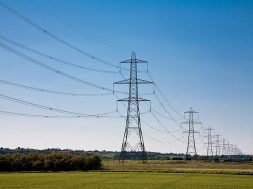
The data showed that the deficit was 2,752 million units (units) in April this year which came down to 124 MU in October, 2022.
Power deficit or gap between electricity required and supplied has fallen from two per cent in April this year to 0.1 per cent, Parliament was informed on Thursday.
”The gap between energy requirement and energy supplied has been reduced from two per cent to 0.1 per cent between the month of April, 2022 and October, 2022,” Power Minister R K Singh stated in a written reply to Lok Sabha.
The data showed that the deficit was 2,752 million units (units) in April this year which came down to 124 MU in October, 2022.
The power deficit was 609 MU (0.4 per cent) in May, 796 MU (0.6 per cent) in June, 434 MU (0.3 per cent) in July, 465 MU (0.4 per cent) in August and 312 MU (0.2 per cent) in September.
In another reply to the House, the minister informed that as on March 31, 2022, the coal stock position was 25.6 Million Tonnes (MT), or 9 days of stock, and it increased to 26.1 MT on September 30, 2022 and further increased to 30.9 MT, or 11 days of stock, as on November 30, 2022.
The coal stock available at coal-based thermal power plants of the country is monitored by the Central Electricity Authority (CEA) on a daily basis.
The minister informed that as on November 30, 2022, there are 75 plants (56 per cent) out of 180 plants are having coal stock of less than 8 days as per their consumption pattern.
The gap between energy requirement and energy supplied has been reduced from two per cent to 0.1 per cent between April and October, 2022, primarily on account of various steps taken by the government, Singh stated.
According to the draft National Electricity Plan published in 2022 by CEA, the projected new coal capacity addition requirement during the period 2022-32 is 35,014 MW, which includes under-construction coal-based capacity totalling to 25,580 MW, Singh stated in another reply to the House.
The 20th Electric Power Survey (EPS) report, published in November 2022, covers electricity demand projection for the year 2021-22 to 2031-32 as well as perspective electricity demand projection for the year 2036-37 and 2041-42 for the country.
The CAGR (Compound Annual Growth Rate) from 2021-22 to 2026-27 for electrical energy requirement is 6.67 per cent and for peak electricity demand is 6.42 per cent, Singh stated.
According to the draft National Electricity Plan 2022, the share of coal-based production in the total generation is likely to reduce to 58.9 per cent during 2026-27 from 72.3 per cent during 2021-22.
The energy requirement is estimated to increase to 19,07,835 MU in 2026-27 from 13,81,646 MU in 2021-22.
Similarly, the peak electricity demand will increase to 2,77,201 MW in 2026-27 from 2,03,115 MW in 2021-22 in the country.
The government has set its nationally determined contribution target to achieve about 50 per cent cumulative electric power installed capacity from non-fossil fuel-based energy resources by 2030.
Singh also told the House in response to another question that against a peak demand of 215 GW, a capacity of 408.7 GW has already been installed and 25,580 MW of thermal power capacity and 76,130 MW of renewable energy capacity is under installation. The whole country has been connected by one integrated grid which can transfer 112 GW power from one corner of the country to another.













